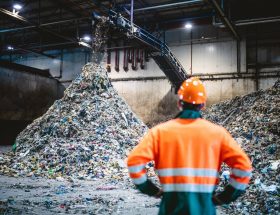Sustainable sourcing in natural stone transforms how we build and design spaces where sustainability meets style. This responsible extraction practice ensures quarries maintain ecological balance, minimize environmental impact, and support local communities while delivering premium stone materials. Beyond environmental stewardship, sustainable sourcing encompasses fair labor practices, efficient resource management, and documented chain of custody from quarry to installation.
Modern certification standards like ANSI/NSC 373 now provide clear frameworks for evaluating stone sustainability, measuring everything from water conservation to workplace safety. These rigorous benchmarks help architects, designers, and contractors confidently specify materials that align with green building requirements while meeting aesthetic and performance demands.
The growing emphasis on sustainable stone sourcing reflects a broader shift toward responsible construction practices. As the building industry faces increasing pressure to reduce its environmental footprint, sustainably sourced stone offers a natural solution that combines timeless beauty with documented environmental responsibility. This approach ensures that our architectural heritage continues while protecting the landscapes and communities that make natural stone possible.
What Makes Natural Stone Sourcing Sustainable?
Environmental Impact Assessment
Environmental Impact Assessments (EIAs) are crucial tools that quarries use to evaluate and minimize their ecological footprint. These comprehensive studies examine multiple factors, including effects on local wildlife, water systems, air quality, and surrounding landscapes. Modern quarries typically conduct baseline studies before operations begin, establishing environmental benchmarks against which future impacts can be measured.
Key assessment areas include dust emissions, noise pollution, water management, and habitat disruption. Quarries implement monitoring systems to track these impacts continuously, using advanced technology like air quality sensors and groundwater monitoring wells. Mitigation strategies are developed based on assessment findings, such as installing dust suppression systems, creating wildlife corridors, and implementing water recycling programs.
Progressive rehabilitation is another vital component, where quarry operators restore worked-out areas while operations continue elsewhere on site. This approach helps maintain biodiversity and ensures the land can return to productive use after quarrying ends. Many sustainable quarries now exceed regulatory requirements, implementing additional measures like native species replanting programs and creating artificial wetlands to enhance local ecosystems.
Responsible Extraction Methods
Today’s sustainable quarrying methods integrate advanced technology with environmental stewardship, marking a significant evolution in how we extract natural stone. These techniques align with modern architecture practices while minimizing ecological impact. Leading quarries now employ computer-guided cutting systems that maximize material yield and reduce waste, while water recycling systems capture and reuse processing water, significantly decreasing consumption.
Responsible extraction also involves careful site planning to preserve local ecosystems. Quarry operators conduct detailed environmental impact assessments before beginning operations, establishing buffer zones around sensitive areas and implementing progressive rehabilitation plans. This includes preserving topsoil for future restoration and maintaining wildlife corridors around active extraction sites.
Advanced drilling techniques and chain saws with diamond-tipped wires have replaced explosive methods in many operations, reducing noise pollution and ground vibration while improving precision. These methods not only protect the surrounding environment but also enhance the quality of extracted stone, ensuring minimal waste and optimal resource utilization.

Certification and Standards
Key Certification Bodies
Several prominent organizations provide sustainability certifications for natural stone sourcing. The Natural Stone Council (NSC) offers the ANSI/NSC 373 Sustainable Production of Natural Dimension Stone certification, which evaluates water usage, site management, and fair labor practices. This comprehensive standard has become a benchmark in the industry.
The Leadership in Energy and Environmental Design (LEED) program, administered by the U.S. Green Building Council, includes credits for sustainably sourced stone materials. Their certification considers factors like transportation distance, extraction methods, and regional materials usage.
Fair Stone International sets strict standards for social and environmental responsibility in natural stone sourcing, particularly focusing on working conditions and environmental impact in quarries. They conduct regular audits and provide chain of custody documentation.
The Building Research Establishment Environmental Assessment Method (BREEAM) offers another respected certification pathway, particularly popular in European markets. Their criteria examine responsible sourcing practices, waste management, and environmental stewardship throughout the supply chain.
These certification bodies regularly update their standards to reflect evolving sustainability practices and technological advancements in the natural stone industry.

Verification Process
The verification of sustainable sourcing claims typically involves multiple layers of assessment and documentation. Third-party certification bodies conduct thorough audits of quarrying operations, examining everything from extraction methods to worker conditions and environmental impact mitigation. These auditors review documentation, perform site visits, and evaluate compliance with established sustainability standards.
Key verification elements include tracking chain of custody, monitoring environmental performance metrics, and ensuring proper documentation of restoration plans. Companies must maintain detailed records of their sourcing practices, including quarry permits, environmental impact assessments, and worker safety protocols.
Regular monitoring and reporting are essential components of maintaining sustainable certification. This often includes annual audits, quarterly environmental assessments, and continuous tracking of resource consumption and waste management. Companies must demonstrate ongoing compliance with sustainability criteria and show improvement in their environmental performance over time.
The verification process also emphasizes transparency. Certified companies typically provide publicly accessible sustainability reports and maintain open communication channels with stakeholders. This transparency allows architects, designers, and consumers to confidently specify sustainably sourced stone in their projects.
Benefits of Choosing Sustainably Sourced Stone

Environmental Benefits
Sustainably sourced natural stone offers significant environmental advantages compared to conventional extraction methods. When quarries operate under sustainable practices, they minimize habitat disruption and implement progressive rehabilitation programs, allowing ecosystems to recover during and after extraction activities.
These responsible operations typically reduce carbon emissions through efficient extraction techniques and optimize transportation routes to minimize fuel consumption. Many sustainable quarries also implement water recycling systems, dramatically reducing freshwater consumption and preventing contamination of local water sources.
Sustainable stone sourcing often includes waste reduction initiatives, where previously discarded materials find new uses in construction or landscaping. This approach maximizes resource utilization and minimizes landfill impact. Additionally, sustainable quarries frequently participate in biodiversity programs, creating wildlife corridors and protecting native species in their operational areas.
The long-term durability of natural stone also contributes to its environmental benefits. Unlike manufactured materials that may need frequent replacement, properly sourced and maintained stone can last centuries, reducing the need for resource-intensive replacements and ultimately lowering the overall environmental impact of construction projects.
Project Value and Recognition
Sustainable sourcing significantly enhances project value and recognition in today’s environmentally conscious market. Projects featuring sustainably sourced natural stone often qualify for prestigious green building certifications like LEED, BREEAM, and Green Star, adding tangible value to the development. These certifications not only validate environmental commitments but can also lead to tax incentives and increased property values.
The use of sustainably sourced materials demonstrates corporate social responsibility and strengthens brand reputation. Many clients and stakeholders now actively seek projects that incorporate sustainable practices, making it a powerful differentiator in competitive markets. Documentation of sustainable sourcing can be leveraged in marketing materials and sustainability reports, showcasing commitment to environmental stewardship.
Additionally, projects using sustainably sourced stone often receive recognition through industry awards and media coverage, generating positive publicity and establishing thought leadership in sustainable design. This recognition extends beyond immediate project stakeholders to influence the broader community’s perception, potentially attracting environmentally conscious tenants and buyers who value sustainable practices in their built environment.
Long-term Cost Implications
While sustainably sourced stone may have higher initial costs, the long-term economic benefits often outweigh the upfront investment. Long-lasting natural stone requires minimal maintenance and can last for generations, reducing replacement and repair expenses. Studies show that sustainable stone installations typically result in 15-25% lower maintenance costs over their lifetime compared to conventional alternatives. Additionally, buildings featuring certified sustainable materials often command premium resale values and attract environmentally conscious tenants. The reduced environmental impact also helps companies meet ESG goals and comply with increasingly stringent regulations, potentially avoiding future compliance costs and penalties.
How to Verify Sustainable Stone Sources
Documentation Requirements
Proper documentation is crucial for verifying sustainable stone sourcing claims and ensuring compliance with environmental standards. Key documents typically include quarry permits, environmental impact assessments, and chain of custody certificates that track the stone from extraction to final delivery. These documents should align with established stone specification guidelines and sustainability certifications.
Organizations must maintain detailed records of their extraction methods, water management practices, and waste reduction initiatives. Third-party verification reports from recognized certification bodies provide additional credibility and should be readily available for review. Essential documentation includes:
– Quarry operation permits and licenses
– Environmental compliance certificates
– Worker safety records and training documentation
– Transportation and logistics documentation
– Energy consumption and carbon footprint assessments
– Waste management and recycling records
– Social impact assessments
– Local community engagement reports
Regular audits and updates of these documents ensure ongoing compliance with sustainability standards. Digital documentation systems are increasingly common, allowing for better tracking and transparency throughout the supply chain. Project managers should establish a clear documentation review process and maintain organized records for verification purposes.
Questions to Ask Suppliers
When evaluating suppliers for sustainably sourced stone, asking the right questions is crucial for ensuring genuine environmental and social responsibility. Start by requesting documentation of their quarrying permits and environmental impact assessments. Ask about their specific extraction methods and how they minimize waste during the quarrying process.
Inquire about their water management practices, including recycling systems and treatment processes. Request details about their energy sources and any initiatives to reduce carbon emissions. Understanding their worker safety protocols and fair labor practices is equally important.
Key questions to pose include:
– What certifications do you hold for sustainable practices?
– How do you manage and rehabilitate quarry sites?
– What percentage of your materials are recycled or repurposed?
– How do you ensure traceability throughout your supply chain?
– What social responsibility programs do you have in place?
– How do you monitor and reduce environmental impact?
– What measures are taken to preserve local ecosystems?
– Can you provide documentation of sustainable practices?
Request regular site visits and updates on their sustainability initiatives. Ask for case studies or references from previous sustainable projects. Finally, inquire about their long-term sustainability goals and how they measure progress toward these objectives. Remember that transparent suppliers will readily provide this information and welcome detailed discussions about their practices.
Sustainable stone sourcing represents a crucial intersection of environmental responsibility and architectural excellence. As we’ve explored throughout this article, it encompasses rigorous environmental standards, ethical labor practices, and careful resource management that benefits both the planet and the construction industry.
By choosing sustainably sourced stone, stakeholders contribute to environmental conservation while ensuring the longevity of natural stone resources for future generations. The certification processes, third-party verification, and documented chain of custody provide the transparency needed in today’s conscious marketplace.
Remember that sustainable sourcing goes beyond environmental considerations. It includes fair labor practices, community impact, and economic sustainability. When selecting stone for your projects, consider working with suppliers who demonstrate commitment to these principles through recognized certifications and transparent practices.
The future of the stone industry depends on widespread adoption of sustainable practices. By prioritizing sustainably sourced materials, we can preserve quarry sites, minimize environmental impact, and support local communities while creating beautiful, lasting structures.
Take action by requesting documentation of sustainable practices from suppliers, staying informed about certification standards, and making conscious choices in material selection. Every decision to choose sustainably sourced stone contributes to a more responsible and sustainable construction industry.










